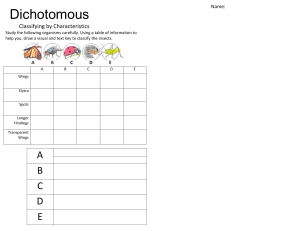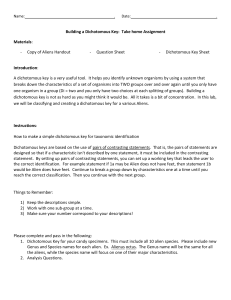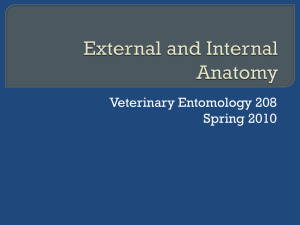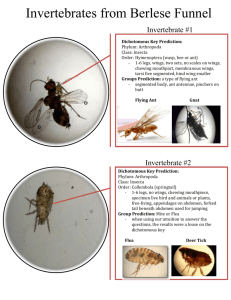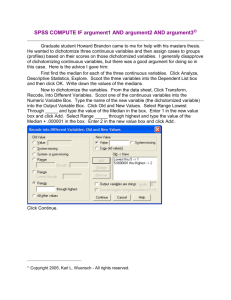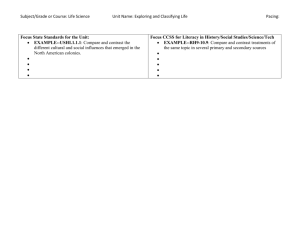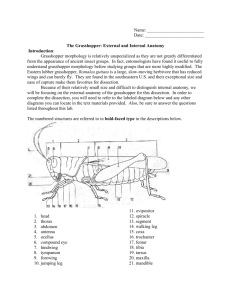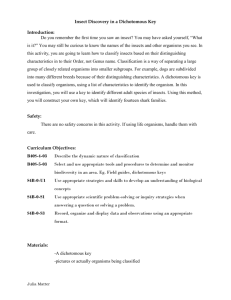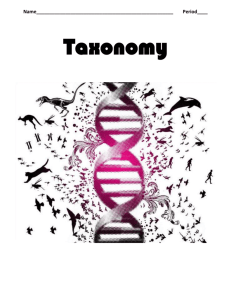Dichotomous Keys
advertisement
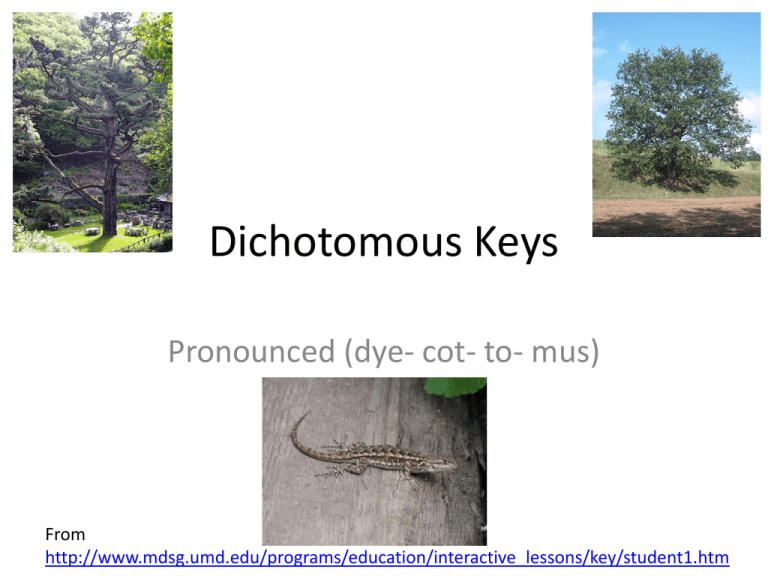
Dichotomous Keys Pronounced (dye- cot- to- mus) From http://www.mdsg.umd.edu/programs/education/interactive_lessons/key/student1.htm What are Dichotomous Keys • A method of identifying a group of living or nonliving things that you want to organize by physical traits using 2 questions at a time • (di= two) • Start by observing the group of things to be used in the key. • List the most general traits that can be used to divide the organisms into categories. Suppose you have four insects - a ladybug, a housefly, a dragonfly and a grasshopper. After studying the insects, you might use wings covering, body shape and where the wings point towards. The first step in the key will be organized the following way: 1. a wings covered by an exoskeleton …. Go to step 2 b. wings not covered by an exoskeleton…. Go to step 3 Step 2 needs to consist of a pair of statements that will allow for the identification of the ladybug and the grasshopper: 2. a. body has a round shape…….. Ladybug b. body has an elongated shape…. grasshopper Step 3 needs to consist of a pair of statements that will allow for the identification of the housefly and dragonfly: 3. a. Wings point out from the sides of the body……. Dragonfly b. wings point to the posterior of the body……housefly All four insects have now been identified Notice that there were four organisms to be identified and it only took three steps. There should be one less step than the total number of organisms to be identified in your dichotomous key. Make a data table for the Salamander Key Activity Using a Dichotomous Key to Identify Salamanders, can you identify , Siren intermedia (scientific name), siren (common name) using the key? Using a Dichotomous Key to Identify Salamanders, can you identify , Necturus maculosus (scientific name), mud puppy(common name) using the key? Use the dichotomous key to identify the rest of the salamanders. Part II: make your own keys for the flowers: 1. Pick some traits 2. Write 2 part questions. 1. A. B. 2. A. B. 3 . A. etc… In your journal: Answer all the pre-lab questions & all the analysis and conclusion questions
